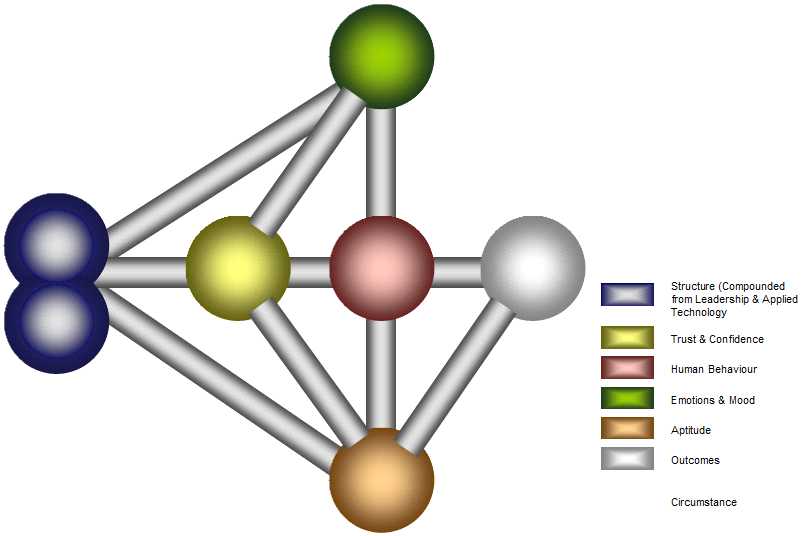 René Van Someren René Van Someren
What can we learn about organisations, from looking at EMOP?
Posted 20 July, 2017
Adapted from:
Van Someren, R., 2014, Aptitude and Attitude as Constraints and Enablers in Organisation Development: An Elementary Model of Organisational Processes, The Hague, Van Someren, ISBN/EAN: 9789079641086
Van Someren, R., 2016, Fundamentals of Organisations, The Hague, Van Someren, ISBN/EAN: 9789079641109
See also: René Van Someren's blog.

EMOP (Elementary Model of Organisational Processes) contains all main aspects that are essential to all organisational processes, of any type of organisation. EMOP also shows how those aspects tend to be interrelated.
So, what can we tell about organisations and about organisational processes, merely from looking at the EMOP model? Here are just a few pointers to get you started.
All EMOP elements
EMOP contains all essential organisational aspects. Consequently, any organisational intervention or other event that does not relate to any of the EMOP elements, will not have significant impact on an organisation’s functioning.
Leadership
Even though leadership is an essential organisational aspect, it’s direct relationship with organisational outcomes is negligible. Leaders cannot significantly affect organisational outcomes without affecting, at least, organisation members’ behaviour and their trust and confidence in various organisational aspects, including their trust in the provided leadership.
Emotions & Mood
There is no significant or substantial link between our Emotions & Mood on the one hand and organisational outcomes on the other hand. Unless we own the company, we are not happier or sadder when organisational outcomes improve or worsen, in quality or otherwise.
There is no significant or substantial link between our Emotions & Mood on the one hand and aptitude on the other hand. Being more competent in what we do, does not seem to make us significantly happier people. Being less competent does not seem to make us sadder.
Trust & Confidence
At the heart of EMOP are both Trust & Confidence, and Human Behaviour. Unlike behaviour, trust directly links to structure. This means, for one, that organisation members do not directly act upon the information and directives that they receive from their leaders or (information) systems. Instead, their behaviour will be strongly affected by their level of trust and confidence in those directives and information. Blind trust can even lead to bypassing aptitude (such as rational thinking).
Outcomes
Only two EMOP elements directly link to outcomes, namely: Aptitude and Human Behaviour. In short, this relates to organisation members doing the right things (behaviour) and doing those things right (aptitude).
Beyond looking
We can go beyond looking at EMOP, for instance by using EMQ to statistically determine the value of each EMOP element and how they correlate with one another. This potentially offers valuable management information about a specific organisation or organisational unit.
Knowing how strongly and significantly the various organisational aspects correlate with one another, helps us in diagnosing organisational processes. It also can help us make a prognosis of effects of certain organisational events or intended interventions. Additionally, it can help us monitor and evaluate organisational effects of past events or interventions.
Content of this posting is taken from:
Van Someren, R., 2016, Fundamentals of
Organisations, The Hague, Van Someren, ISBN/EAN: 9789079641109
Van Someren, R., 2014, Aptitude and
Attitude as Constraints and Enablers in Organisation Development: An Elementary
Model of Organisational Processes, The Hague, Van Someren, ISBN/EAN: 9789079641086
René Van Someren’s personal website is: www.rene.vansomeren.org
René Van Someren's blog
|